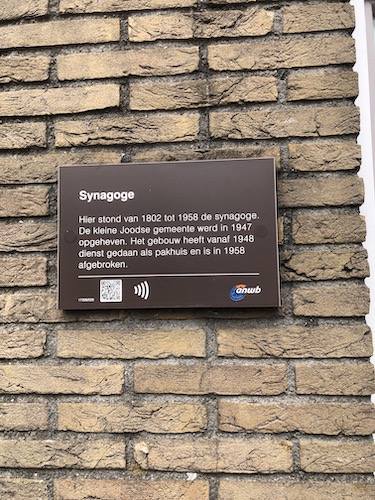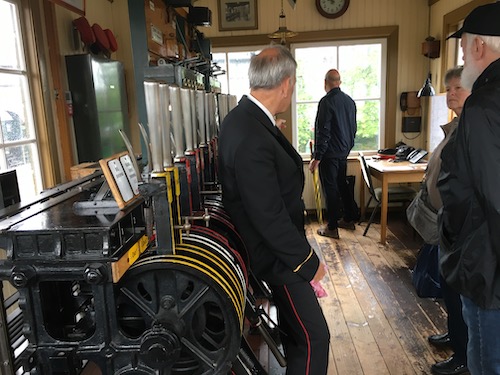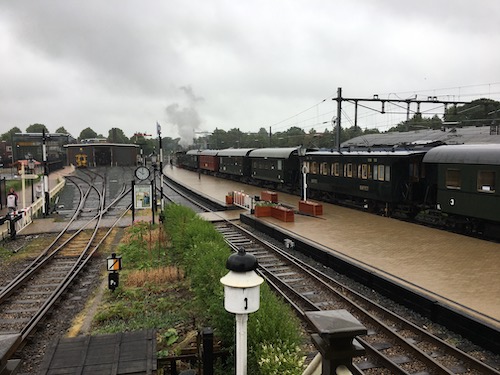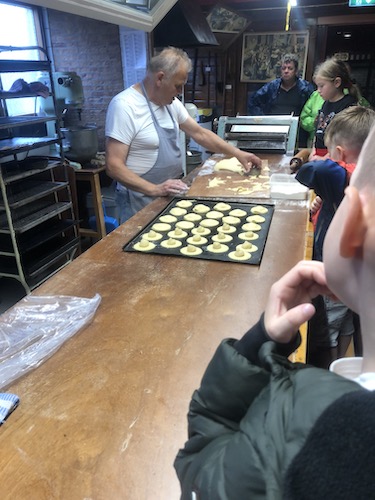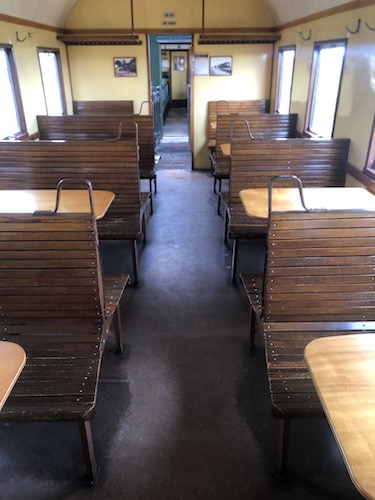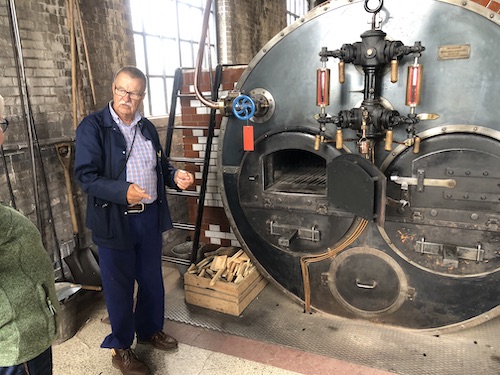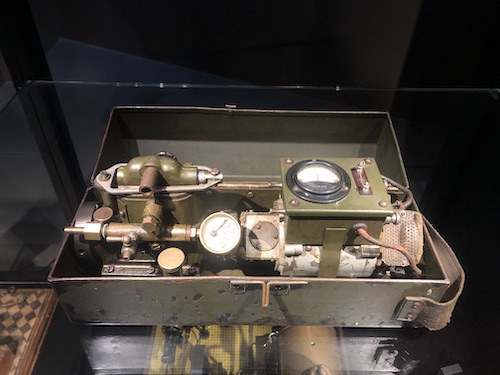2023 Museum tour
JUNE-JULY 2023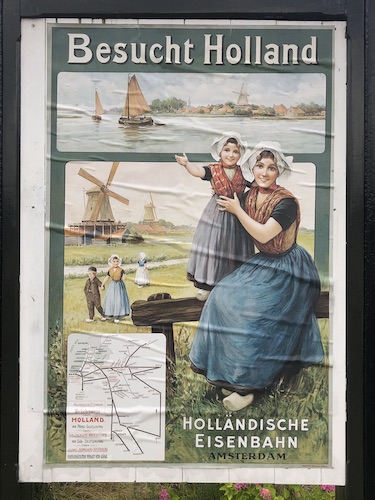
Time for a holiday trip! Between various appointments, we had limited time available, not enough for a faraway trip. But the Netherlands is also worthwhile. And to make best use of our prepaid museum annual pass, we included a number of museums of very different character in the itinerary.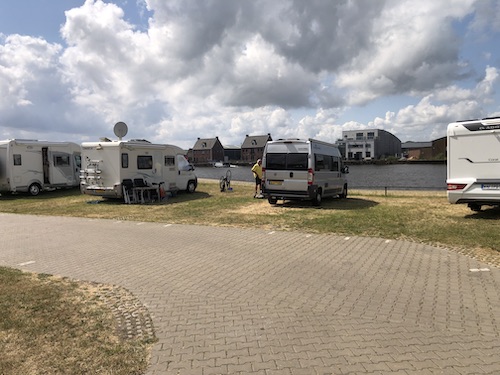
First destination was the old Hanseatic city of Hasselt. The camper place is right next to the Zwartewater where plenty of big ships and small boats pass by.
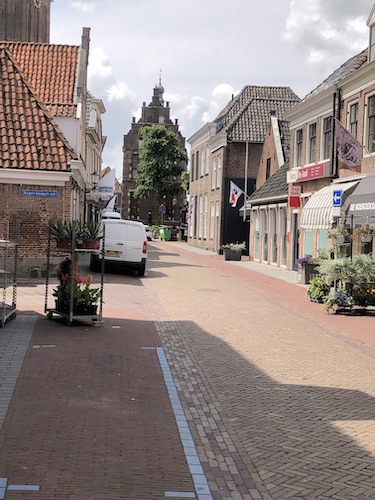
Hasselt turns out to be a particularly nice town. The old town hall houses an exhibition illustrating the (former) importance of the Hanseatic League.
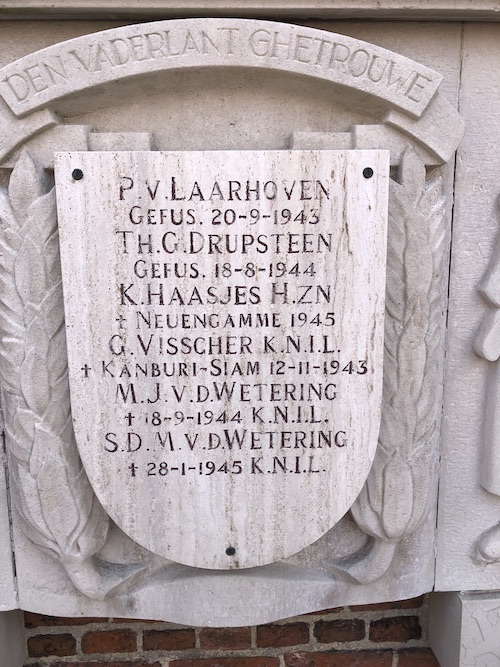
The local war dead are remembered.
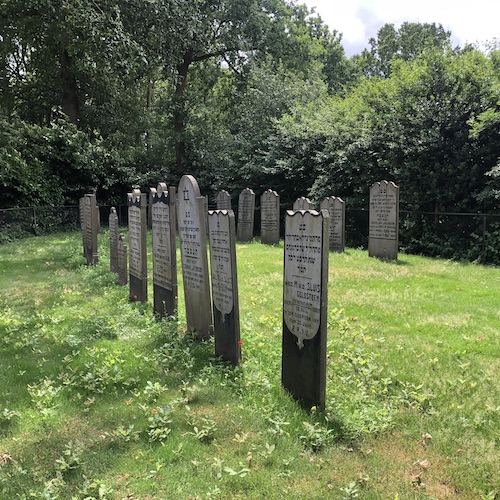
There is a small Jewish cemetery.
Only a sign recalls the shul. After the Shoah, the building was used as a warehouse. It was demolished in 1958.
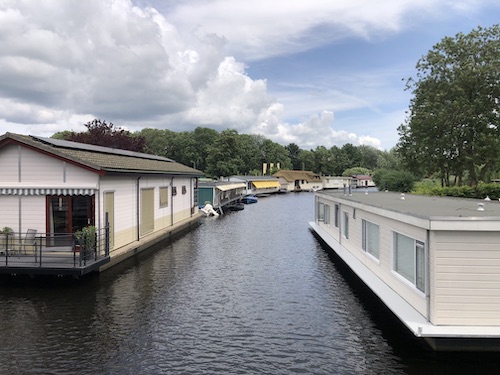
These houseboats can rival full-sized houses in terms of comfort.
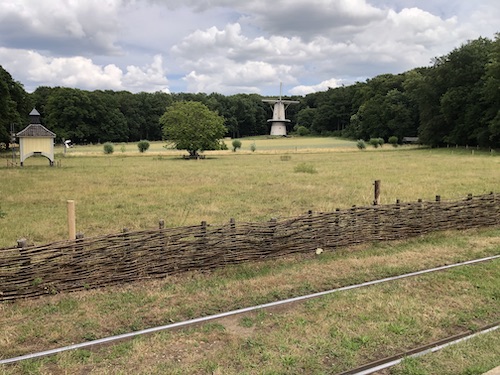
From Hasselt, we drive to Arnhem, where we visit the Open Air Museum. Here, a large number of houses, huts, barracks, farms and barns have been repurposed from different parts of the country and placed in appropriate settings.
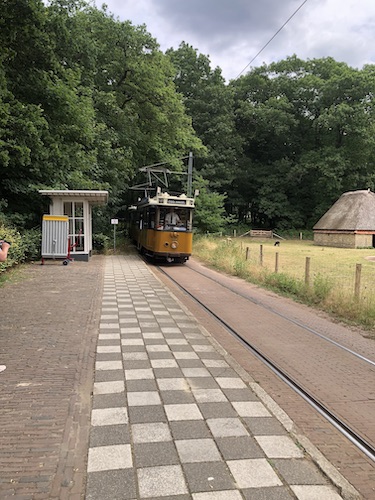
Rather than walk miles through the giant museum, you can take the historic tram that runs around the park. You can hop on or off at any stop.
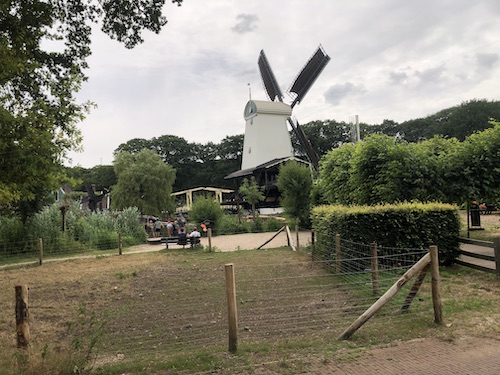
Just a nice vista.
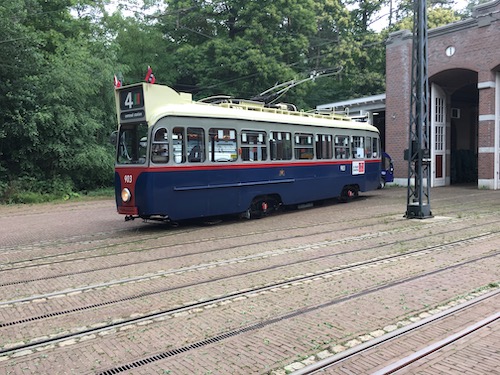
Sylvia - naturally - became totally lyrical about the Amsterdam tram, so well known to her from her younger years.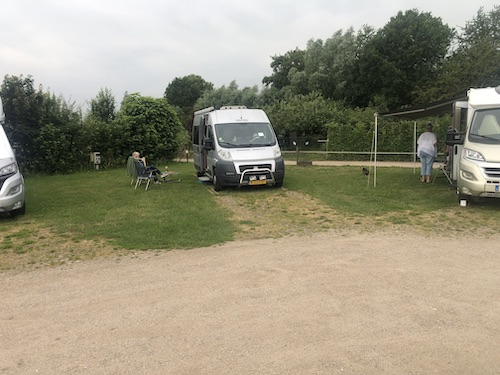
Our next motorhome site was in Steenderen. All the technical facilities were perfectly fine, but the number of prohibitions and commandments was too much for us.
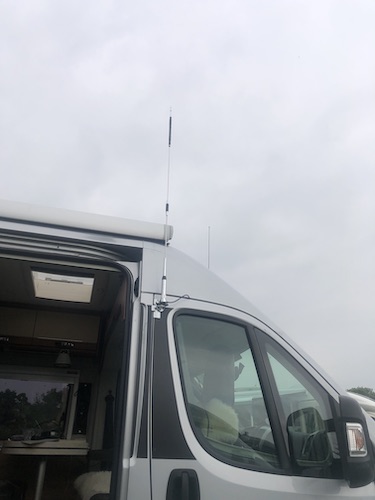
From the motorhome site in Steenderen, Ernst made a few pleasant QSOs on 70 cm via regional repeaters.
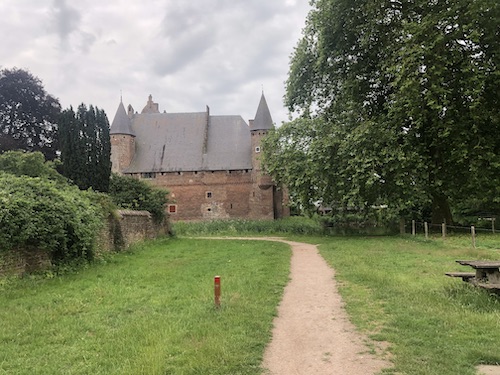
The 14th-century Hernen Castle, extended many times over the centuries, scarred by fire, but never attacked by an enemy.
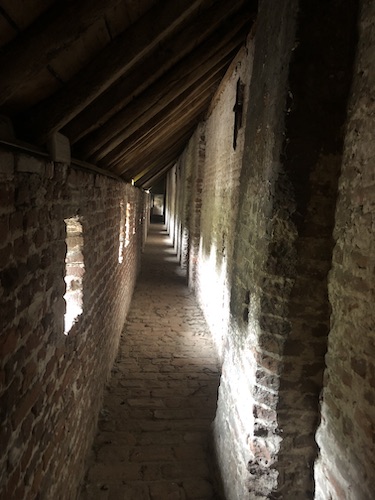
At least the defenders could walk around dry.
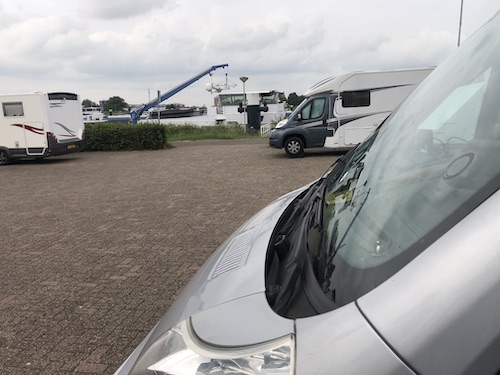
The motorhome site in Gorinchem belongs to the marina, which in turn spills over into the commercial harbour. So we have a view of pleasure yachts and large barges.
There also is a restaurant, where they take into account our dietary needs and we have a tasty dinner....
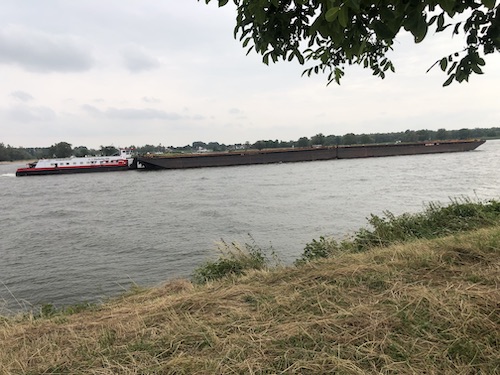
Behind the dike flows the Upper Merwede, where, in addition to small motor yachts and sailboats, this kind of six-barge pushers also passes by.
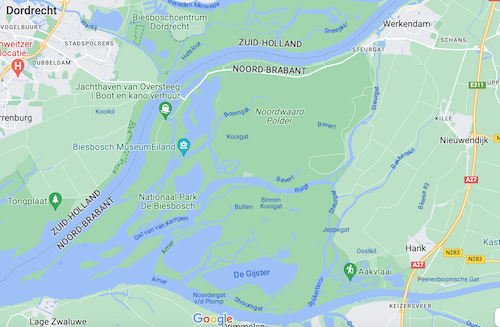
From Gorinchem (pronounced "Gorcum"), it is not far to National Park "de Biesbosch"(rush forest). Major floods since the Middle Ages have given this area unique characteristics.
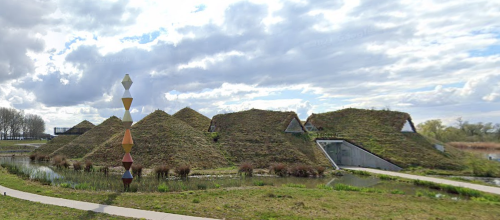
At the Biesbosch Museum, you get a good look at the (hard) life of the fishermen, reed cutters, rush cutters and willow growers who worked and lived here over the years.
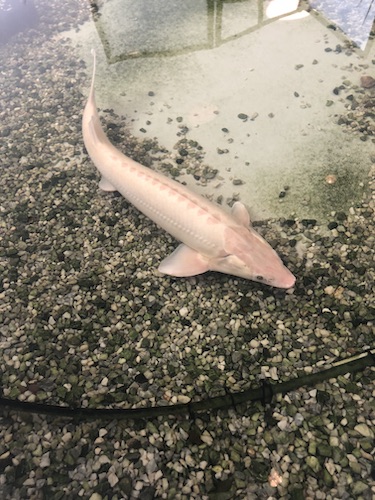
The rivers, creeks and ditches were once rich in small and large fish, including salmon and sturgeon. The latter two became extinct in the 20th century.
Now that much farmland has been returned to nature and pollution has been greatly reduced, these fish are waiting to return. At the museum, young sturgeons of various sizes are already swimming in a large, shallow pond. The beavers imported from eastern Germany are doing so well that they have also found their way outside the Biesbosch, and recently the first otters have been seen again.
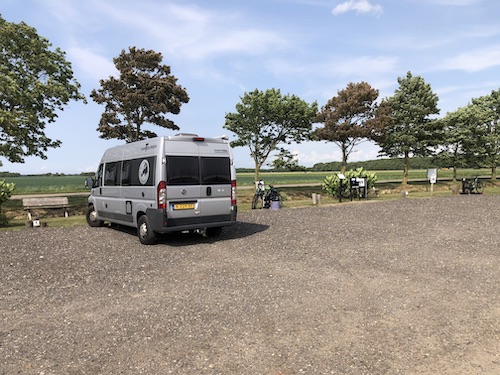
Our last overnight stop for two nights is in Slootdorp, in the north of the province of North Holland.
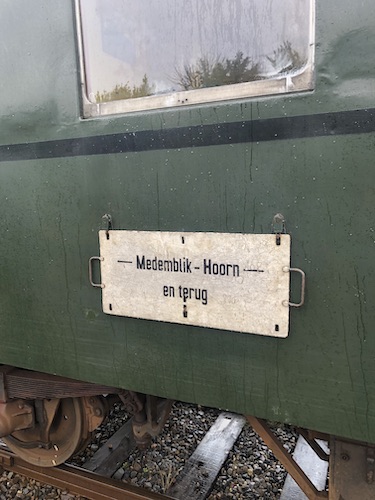
The museum card also gives us access to the Museum Stoomtram Hoorn-Medemblik.
At the signal box, we get an explanation of block protection and the responsibilities of the various functionaries involved. Fascinating are the mechanical circuits with pawls, cams and rods from long before electronics made this all cut-and-dried.
Once upon a time, the tramway was a train that did not have an entirely separate route. Say "a poor man's train".
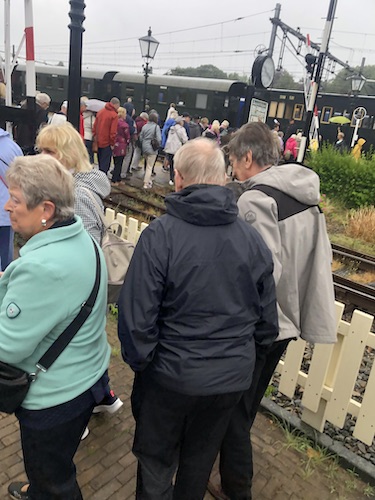
We were not the only ones who wanted to come along. Fortunately, there were enough carriages to provide seats for all passengers.
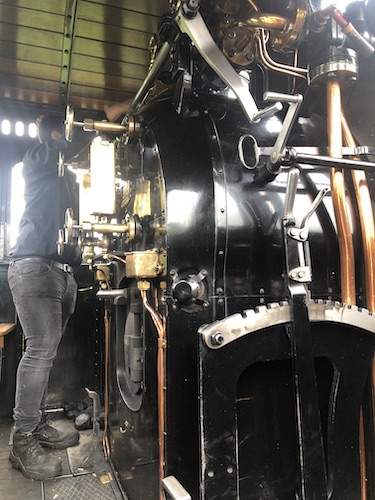
Operating a steam locomotive involves more than lighting a fire.
In the time between outward and return trips, we stroll through Medemblik and visit the bakery museum. Here a demonstration of stuffed cakes (with almond paste) baking.
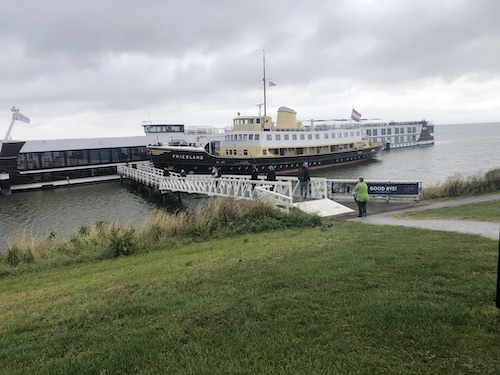
Most passengers continue their journey by historic ship "Friesland".
Consequently, the tram is not half as full as on the outward journey.
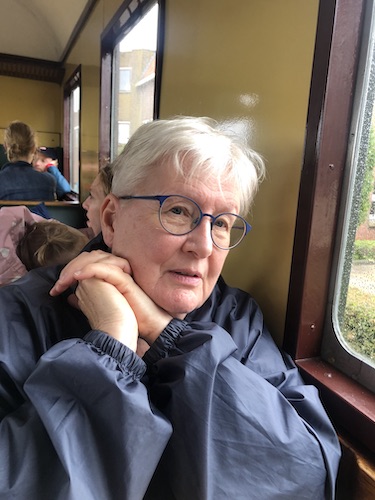
An attentive passenger.
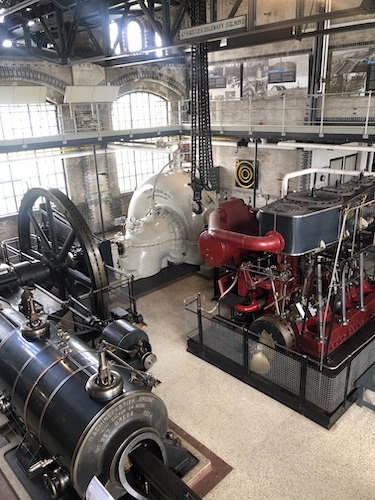
The next day, we drive from Slootdorp back to Medemblik. The direct route by car is much shorter than the one the tram took yesterday. The housing of the former steam pumping station now houses a steam engine museum. An incredible collection of steam engines, from small to very large. And most are fully functional and are run on certain days.
By the way, the largest of three centrifugal pumps is still used at extremely high water levels to keep the polder dry.
This steam boiler has the mandatory approval and is used to power the connected machinery. And, again, here too, it is the many, well-trained and highly enthusiastic volunteers who make the whole operation possible.
The very smallest.
You wouldn't know it, but this portable box houses a complete, steam-powered power plant. In World War II, this box was used by agents parachuted behind enemy lines to power their clandestine radio equipment. The output was 8V/5A.
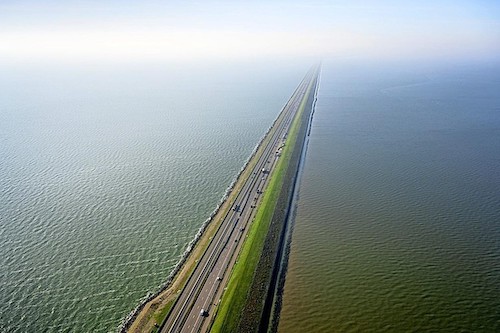
From North Holland to Friesland, the Afsluitdijk, 32.5 km (20 Mi) long, has been running since 1933.

In Franeker, we interrupted our journey home for the regional Mensa pub meeting.
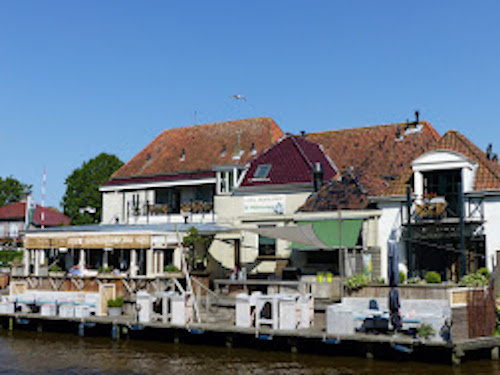
On this spot, by the water, just outside the city gate, there has been an inn since the earliest times. Today, it is a fine hotel-café-restaurant.
And back home in time for dinner. Only been away for one week, but seen a huge amount!

